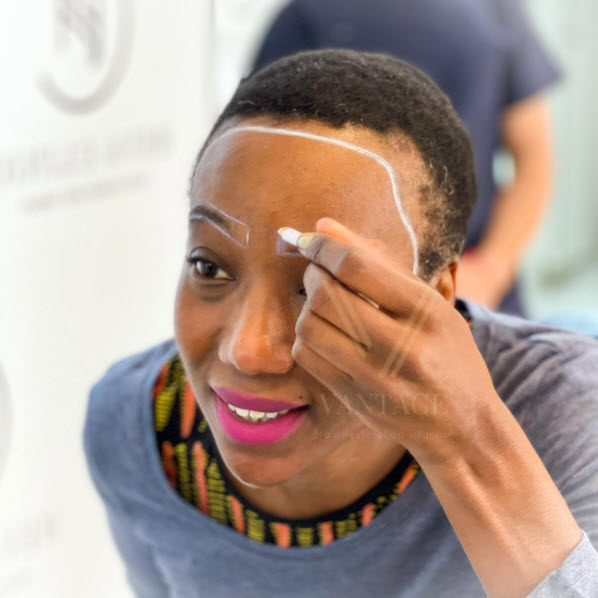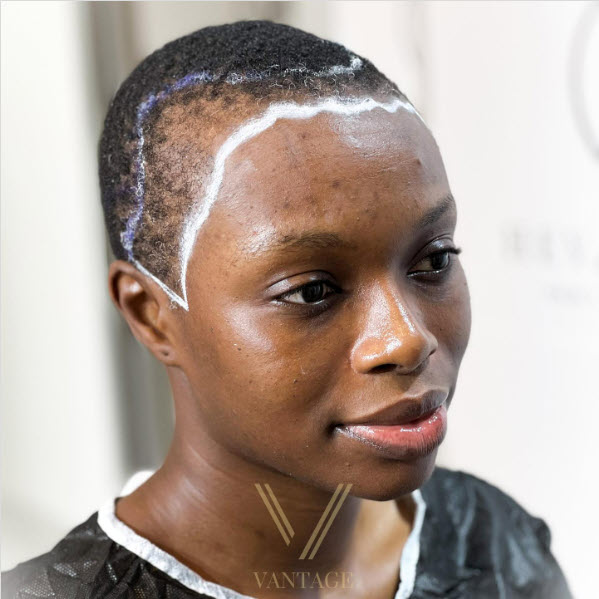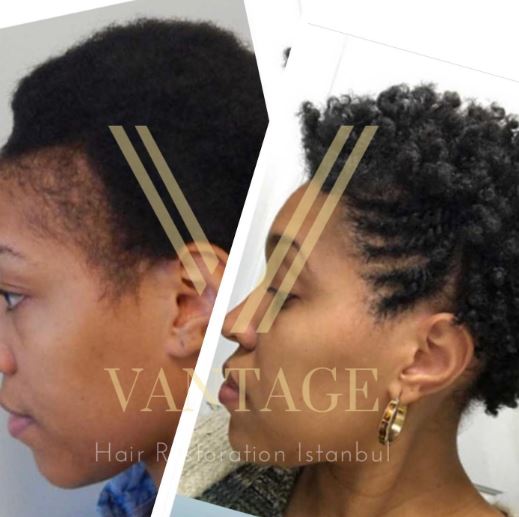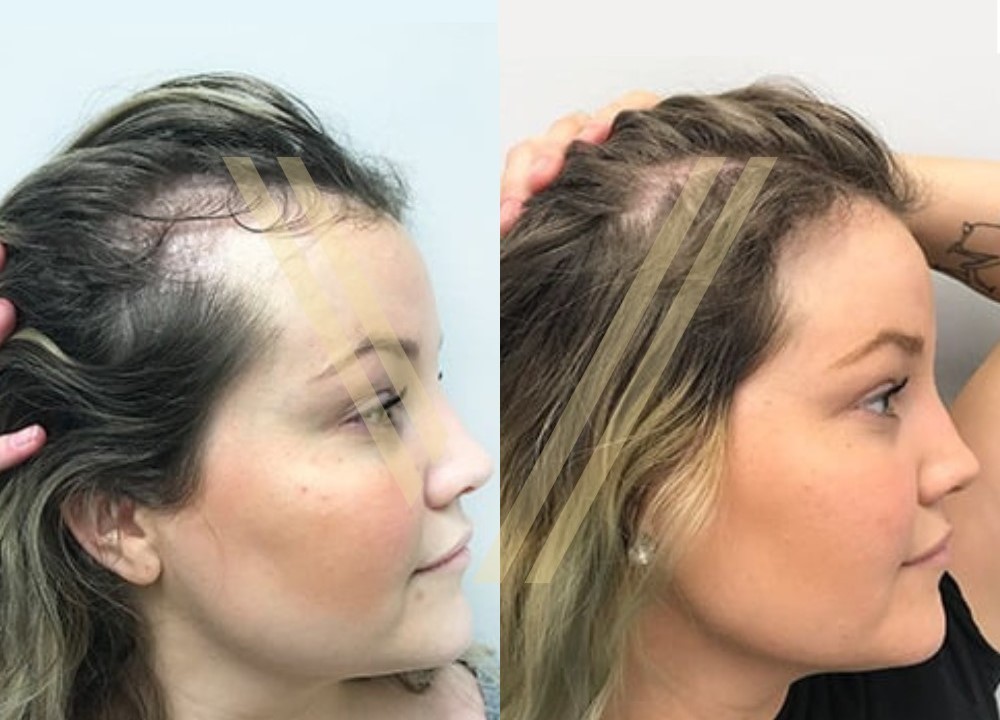
Even though female hair loss is not as noticeable early on as male hair loss, it is still a problem that bothers many women. Many women suffer from female pattern hair loss or other types of hair loss due to over-treating, medications, or hormonal imbalances.
Female hair transplant has been one of the most reliable solutions to treat the effects of female hair loss. Usually, women with wide foreheads benefit from a female hair transplant.
Female hair transplant in Turkey is a great way to regain the healthy hair look that has been the choice of many women. Experienced hair clinics in turkey offer great hair transplant results for women who have been suffering from significant hair loss.

One Patient at a Time

In-House Team

No-Shave Option

No Hidden Fees
Can females get hair transplants?
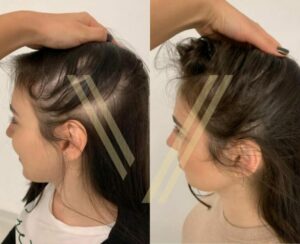
As hair loss has no gender, its treatment options are also not limited by gender. Just like men, women also experience hair loss due to various factors such as hormonal imbalances, aging, and stress. Ultimately, a hair transplant is the only permanent and effective solution to treat hair loss in both men and women. In fact, a hair transplant may be even more beneficial for women who’d like to achieve a seamless appearance. For many women, it’s even feasible to hide traces of hair transplant as it recovers, making it a popular choice among women who wish to improve their hair density.
Is hair transplant successful in females?
Hair transplants have a high success rate for both men and women. The success rate can go as high as 98%. However, the success of the procedure depends on several factors, such as the surgeon’s skill, the thickness, texture, and density of the hair follicles, and the hair care routine followed after the procedure. It is important to note that a hair transplant procedure involves the surgical removal of hair follicles from one part of the body and transplanting them into the balding or thinning areas. Therefore, it is crucial to have a thorough consultation with our surgeon to determine if you are a suitable candidate for hair transplant and to discuss the potential risks and benefits.
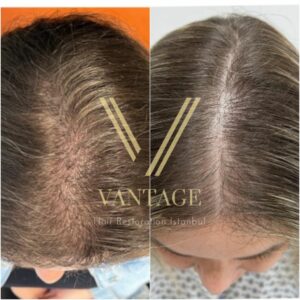
Does hair transplant work for female pattern baldness?
Although male pattern hair loss is typically limited to the temples and crown, female pattern baldness is a type of hereditary hair loss that mainly affects women. It usually causes an even spread of thinning hair loss across the scalp, which can result in a widening parting and, eventually, a general hair thinning across the head.
It’s worth noting that a hair transplant is effective for almost all types of patterned baldness except the autoimmune ones. Fortunately, with the right approach, female pattern baldness can be successfully treated with the help of hair transplants.
Female hair transplant without shaving
A fully shaven hair transplant can be stressful for women who don’t want to make a dramatic change in their appearance for the hair transplant operation. Don’t worry though because partially shaven and unshaven hair transplant are great alternatives to fully shaven hair transplant.
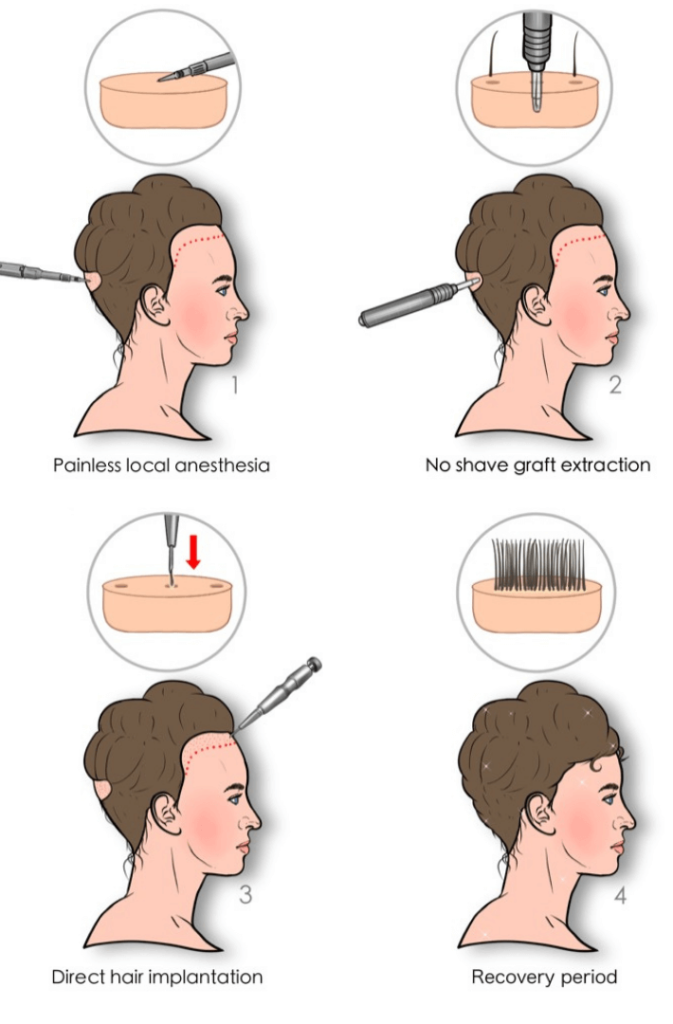
In a partially shaven hair transplant, only a small donor site is shaven where the donor hair grafts can be harvested. This shaven area can easily be hidden by the rest of your hair. The extracted hair grafts can then be transplanted into the target area through the FUE method or DHI technique.
How much does a female hair transplant cost in Turkey?
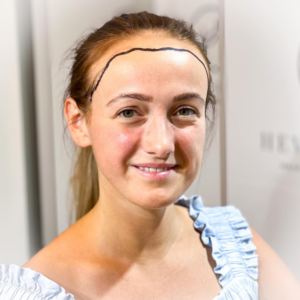
As a popular destination for medical procedures, Turkey has become a hub for those seeking high-quality services at affordable prices. If you’re looking to get a hair transplant, Turkey is an excellent option, as you can get the procedure done with excellent quality at a more reasonable cost. The cost of a female hair transplant in Turkey can vary depending on the extent of hair loss, the method used for the procedure, and other factors. On average, it usually ranges between $2,200 and $4,000. Please feel free to contact our team of medical consultants for more information about costs.
How much does a female hair transplant cost in other countries?
The cost of hair transplants for women varies across countries. In the United States, the price typically ranges from $4,000 to $15,000 or more, while in the United Kingdom, prices are usually between £5,000 and £12,000. European countries show a wide range of costs, whereas Western European nations generally align with the higher end of the US and UK ranges. Albeit, Eastern European countries often offer lower costs, for instance, Poland, where prices range from $4,000 to $7,000. Factors such as clinic reputation, surgeon experience, and specific procedures employed influence the prices.
How can a woman hide her hair transplant?
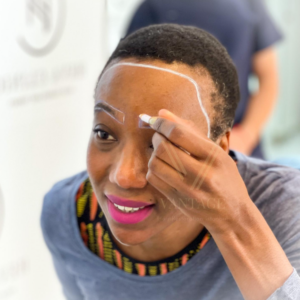
One of the advantages of getting a hair transplant as a woman is that it can be easily concealed by changing hairstyles. Moreover, you can use accessories such as hats, berets, bandanas, or headbands to cover the transplanted hair. Additionally, unshaven hair transplant methods are available. Hairpieces and wigs are also an option. Alternatively, you can embrace the process and let your hair grow naturally.
Do girls have to shave their head for a hair transplant?
Many women are hesitant to undergo a hair transplant because the traditional method requires shaving the head, which can have a significant impact on their appearance and take a long time to recover from. Additionally, women can often conceal hair loss or balding with longer hair, so shaving their heads can be traumatic.
Fortunately, there is an unshaven method of hair transplant for women that is relatively straightforward. Women typically have enough hair to cover the donor area and do not need to change their hairstyle after the procedure. As a result, most female hair transplants are now conducted using this unshaven method.
Will the donor hair grow back?
After a hair transplant, the donor area will regrow hair as it recovers. During the first month following the procedure, you may experience swelling, scabbing, and shock loss in that order. Towards the end of the second month and into the third month, you may start to observe the first signs of hair growth. Hair growth will continue in both the donor and recipient areas thereafter. However, it’s important to note that the growth rate may vary from person to person as everyone has their hair growth cycle.
African American woman hair transplant

The natural curly structure of African American hair type makes hair transplant a difficult task. Because the hair continues its curly structure under the scalp it occupies a wider area making it harder to extract without damaging the structure. However, thanks to the novel hair transplant technology, it is possible to achieve such delicate tasks.
African American women hair transplant can help black women regain their voluminous hair back. Usually, African American women are affected by female pattern baldness or traction alopecia which is caused by tight hairstyles. An afro hair transplant can help cover up the bald or thinned areas and revive your appearance.
What is the success rate of female hair transplant?
The success rate of female hair transplants has increased as new hair transplant techniques and technologies have developed over the years. With the FUE or DHI hair transplant techniques, the success rate of female hair transplant can vary between %85-95.
This success rate usually, depends on the natural structure and growth cycle of your hair, the expertise of your surgeon, and how well you have followed the aftercare instructions.
How long does the female hair transplant operation take?
The length of a female hair transplant operation can change depending on the extent of the transplant, including the number of hair grafts transplanted, the hair transplant technique, and the size and experience of your clinical team. However, on average, a female hair transplant procedure can take between 4-8 hours.
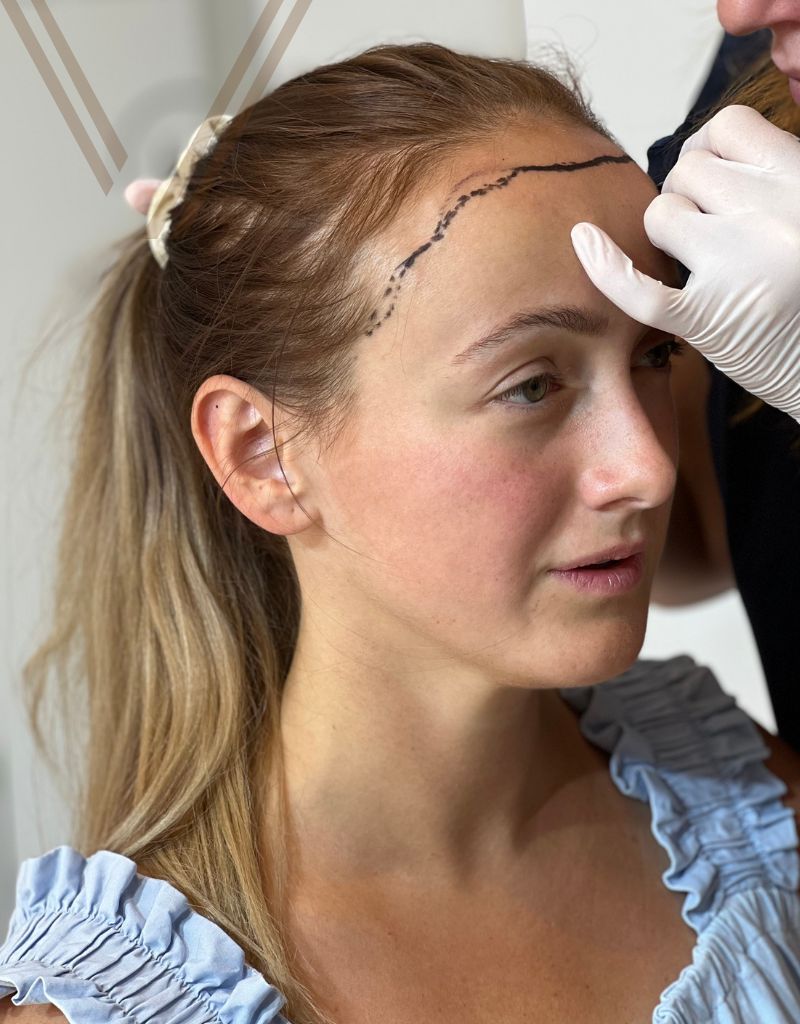
What are the other hair restoration options for women?
There are also alternatives to a female hair transplant operation for women who are unsure about going through surgery or at the earlier stages of hair loss. These alternatives include medication, platelet-rich plasma (PRP), and forehead reduction surgery.

Medications
The most popular medications for battling hair loss are minoxidil and finasteride. These two medications approach hair loss differently and can provide great results.
Even though, finasteride is not recommended by FDA for treating female hair loss, lots of women that use finasteride give positive feedback.
On the other hand, minoxidil can be used to treat female pattern baldness or hair loss caused by other factors. Minoxidil works by increasing blood pressure and the flow of blood to the hair follicles. The increased blood flow help nourish the hair follicles and supports hair growth. In doing so, minoxidil can help stop or slow down hair loss as well as increase the health of hair.

PRP
PRP for hair loss is another non-surgical alternative to a hair transplant. PRP treatment works by separating the platelet-rich part of your blood and injecting it into the problem areas for stimulating hair growth. Because this treatment involves the use of a substance obtained from your body, it is considered to be extremely safe. The platelet-rich plasma nourishes the hair follicles and slows down hair loss.

Forehead reduction surgery
The forehead reduction surgery, which is also known as hairline lowering, can be a good option for a recessed hairline. If you have a noticeable hairline recession, you can fix the look of your widened forehead through a forehead reduction surgery. In this method, the excess skin is cut along your forehead and the hairline is lowered. So, instead of filling in the gaps, your surgeon will get rid of the bald areas. This option can be great for women who also want the lifting effects of the forehead reduction surgery or do not have enough healthy donor grafts.
How many hair grafts do I need for female hair transplant?
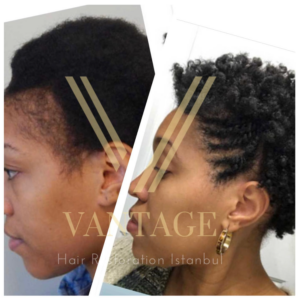
The number of grafts required for hair transplant surgery varies based on the degree of hair loss and the thickness and texture of hair follicles. The Norwood Scale is a helpful tool in determining the amount of grafts needed for the procedure. This scale classifies hair loss based on severity, making it easier to determine the appropriate number of grafts required for the surgery.
What if I don’t have enough donor hair for transplant?
If you are lacking sufficient donor area for a hair transplant, you have the option of considering non-surgical hair transplant alternatives like PRP, scalp micropigmentation, or hairpieces. Alternatively, you can choose to have a hair transplant in two separate sessions, with additional procedures available after the initial session as the donor area becomes adequate.
How long does a female hair transplant last?
A female hair transplant is an excellent option if you’re searching for a long-term solution to improve hair density in women. Fortunately, the outcomes of a female hair transplant operation are permanent, which means you can enjoy your new hair for the rest of your life. However, it is worth noting that although you may still lose existing hair outside or around the transplant area, the transplanted hair will remain in place.
Is female hair transplant permanent?
Female hair transplant is a viable permanent solution to address baldness. The longevity of hair transplants is subject to the health of the donor area, the severity of hair loss, and the aftercare regimen you adhere to. By obtaining a hair transplant from a qualified surgeon and maintaining a nurturing hair care routine, you can achieve promising permanent outcomes. It is important to note that the success of the procedure largely depends on the surgeon’s expertise and the quality of the donor hair used. Therefore, it is crucial to carefully choose a skilled and experienced surgeon to perform the procedure.
Who is not suitable for a hair transplant?

If you’re considering a female hair transplant, ensuring that you’re in good health is important. Individuals with autoimmune diseases may not be suitable candidates for the procedure. Additionally, having an unhealthy donor area or experiencing blood clotting issues, such as hemophilia, may also make you an unsuitable candidate for the procedure. Feel free to get in touch with our medical consultants, who will be happy to provide you with more information on whether or not you are eligible for the procedure.
What age is best for a female hair transplant?
A hair transplant is typically available to individuals at least 18 years of age or older. However, to ensure the best possible outcome and to avoid any potential complications, it is recommended to wait until the hair loss pattern has stabilized before undergoing the procedure. This is because the hair loss may reoccur if the surgery is done too soon. For men, the optimal age range for a hair transplant is typically between the late 20s and mid-30s. It may take longer for the hair loss pattern to settle for women, so the ideal age range for most women to have a hair transplant is typically between the early 30s to mid-40s.
Why wait until 25 for a hair transplant?
The donor area, typically located at the back and sides of the scalp, is considered stable by the age of 25. This means that the hair follicles in this area are less likely to be affected by DHT, which is responsible for male and female pattern baldness.
It’s important to keep in mind that hair loss can progress differently in each individual, and having realistic expectations about the long-term outcome of the transplant is crucial. Waiting until the age of 25 allows for a more accurate prognosis, which can help individuals make informed decisions based on their specific needs and circumstances.
What age is too late for a hair transplant?
As we age, the growth of cells in the human body slows down, which may affect the productivity of hair follicles. Therefore, it is more common to face health conditions as we get older. If you are considering a hair transplant, it is recommended to do it before it is too late. Generally, getting a hair transplant in your late 60s or 70s may be considered late. However, if you are overall healthy, you can get a hair transplant at any age.
If you wish to learn more, you can check out before & after photos of every graft number or hair transplant growth timeline for day by day recovery results.
To get a free consultation from our team of experts, feel free to reach us onour contact formor click on Whatsapp Icon above now! We will be more than happy to escort you through your journey of youthful look and enhanced confidence!


